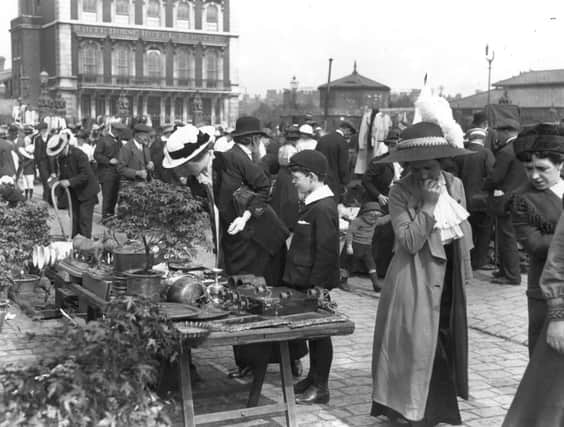Markets in London date back to the middle ages and were set up to serve the population of the City of London.
Over time, some emerged as wholesale markets serving specific produce such as vegetables, meat, or fish.
As the city spread in the 18th and 19th centuries, street markets were set up to meet the needs of the new suburbs.
With the introduction of trams on the streets of London, these were moved into neighbouring side streets, or new covered markets.
Today London’s markets are regulated by the City and the 32 London boroughs. Some have moved from their original locations but most continue to be operated by the City of London Corporation.
Billingsgate fish market and Smithfield meat market, which are two of the capital’s oldest markets, are being relocated from the city centre to Dagenham Dock in east London as part of a £1bn regeneration project.
The closure of Smithfield as a market ends over 800 years of history of trading meat at the site.
Billingsgate fish market, meanwhile, moved to its current Docklands location in 1982.
Once the markets have moved, Smithfield Market has been earmarked to be converted into a cultural hub to sit next to the relocated London Museum
The new market at Dagenham Dock is expected to open between 2027-2028.
London’s markets remain a vital part of life in the capital and continue to serve as an attraction for locals and tourists alike. Today most markets operate as general markets selling a range of goods from antiques to organic produce.
We’ve taken a look back at what some of the most popular markets including Covent Garden Market and Caledonian Market looked like almost a century ago.
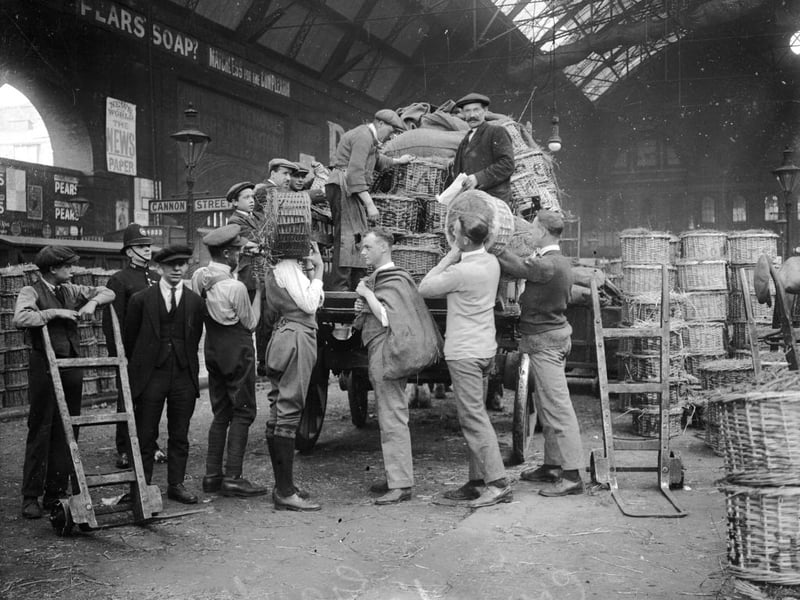
1. circa 1930: Porters at Covent Garden Market in London unloading baskets of goods from a cart. (Photo by General Photographic Agency/Getty Images)
For more than 300 years Covent Garden held the principal fruit, flower, and vegetable market of London.
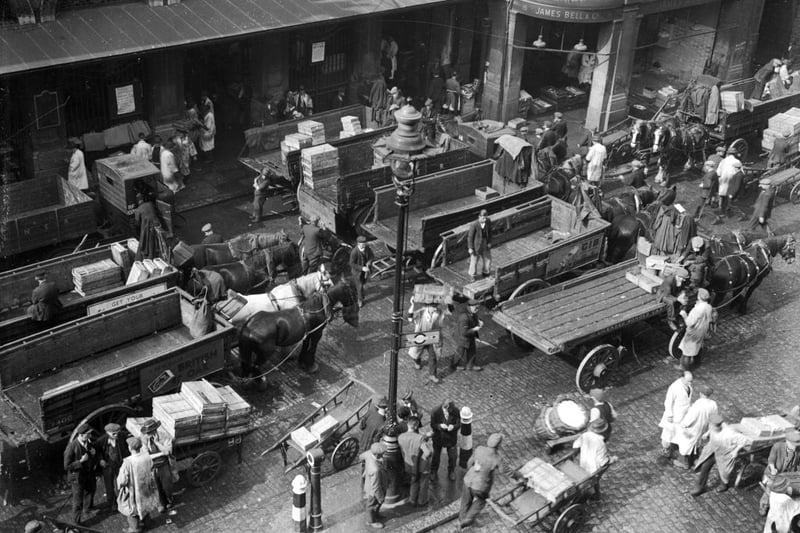
2. circa 1930: Horse-drawn carts at Billingsgate Fish Market in London. (Photo by General Photographic Agency/Getty Images)
Billingsgate was originally a general market for corn, coal, iron, wine, salt, pottery, fish and miscellaneous goods and started to exclusively trade fish in the 16th century.
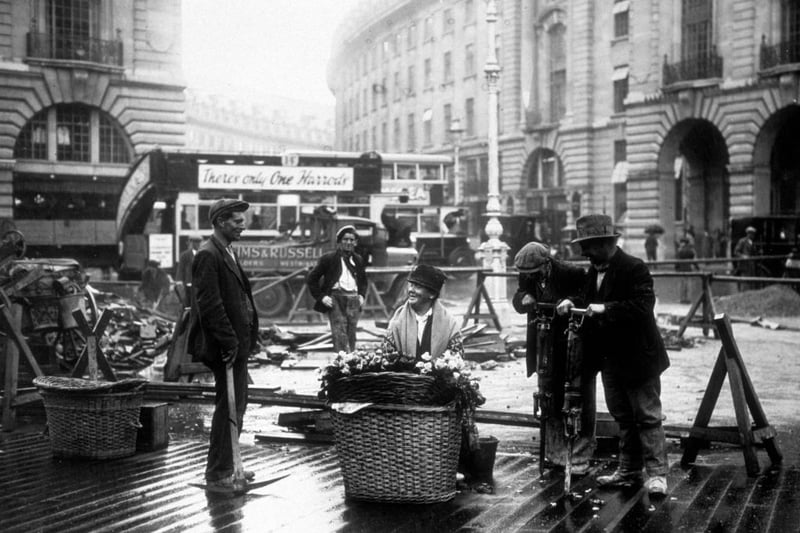
3. August 1930: A flower seller sitting at her stall surrounded by workmen using pneumatic drills in Piccadilly Circus, London. (Photo by J. A. Hampton/Topical Press Agency/Getty Images)
Flower selling was a common trade in London during the 1930s.
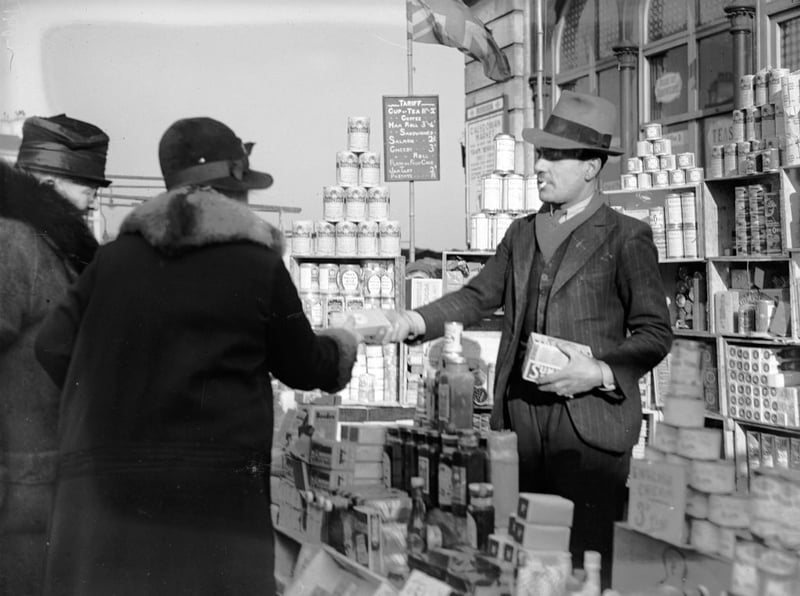
4. circa 1935: Shoppers buying groceries from a stall at Caledonian Market, London. (Photo by General Photographic Agency/Getty Images)
This enormous market sold everything from antique silver to second-hand false teeth, and was one of the sights of London.
